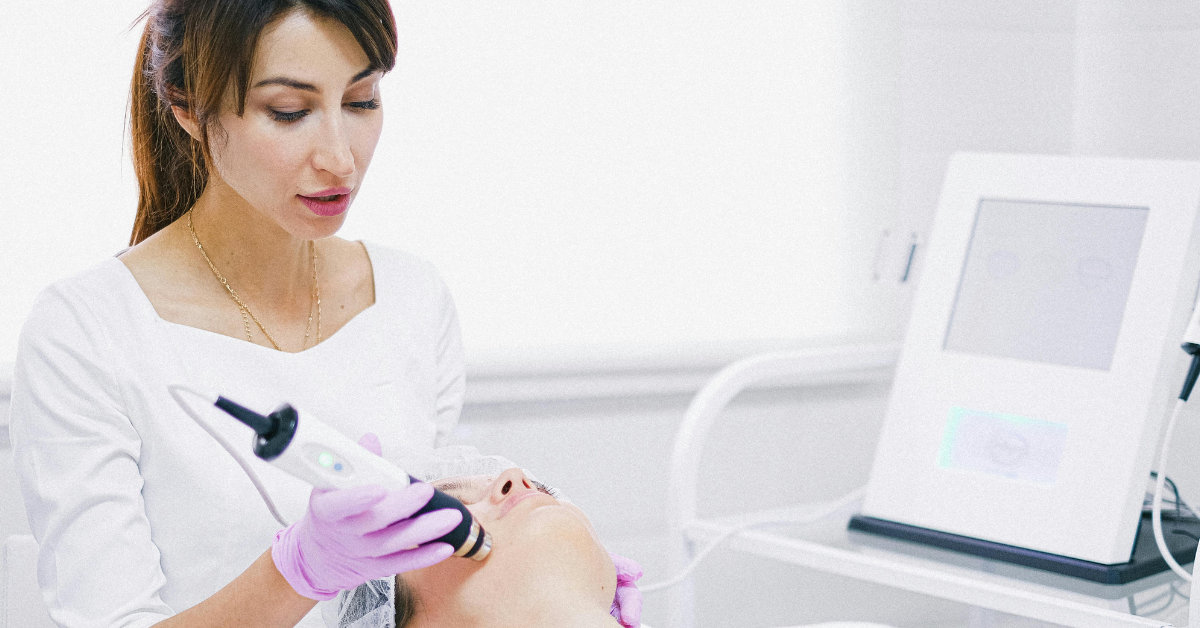Wrinkles, fine lines and creases are all part of the ageing process; it’s natural and to…

How to Banish Age Spots for Blemish-free Skin
There are a lot of things that prevent skin from being completely free of blemishes, and age spots are one of them. If you spend a lot of time in the sun – or any time in the sun without adequate protection – you run the risk of developing age spots. These are harmless and are no danger to you, so they are not something to worry about medically. However, aesthetically, age spots could cause you to feel unhappy with your appearance. If this is the case, you can have them removed via a range of methods, many of which are detailed below.
What Are Age Spots?
Age spots are small, darker areas of the skin, and they look somewhat similar to freckles. They can vary in size, but they are usually flat and round. They are common in adults over the age of 50, but age spots can appear at any age, especially if you spend a lot of time in the sun. They are most common amongst older adults with fair skin or freckles and those who frequently use sun beds or spend time in direct sunlight.
Age spots can appear anywhere on the body that has been exposed to sunlight. They are most commonly found on the hands, arms, neck and face. You might have heard of age spots being referred to as sun spots or liver spots. You can reduce the chances of getting age spots by protecting yourself from the sun, such as by wearing a high SPF sun cream and covering up with clothing.
A lot of people wrongly assume that age spots are dangerous, but this isn’t the case, and they do not turn into cancerous moles as some people believe. They do not need treatment, they are merely your skin’s attempt to protect itself from the sun by darkening in colour, and you can leave them without having to worry about any developments further down the line.
Should you not like the way age spots look, there are treatments available for age spots, but these are purely cosmetic. If you are unhappy with the appearance of age spots, you can have them lightened or removed altogether by treatments such as laser, medication and chemical peels.
How to Effectively Remove Age Spots
Though you can help to prevent age spots by avoiding the sun and using a high-quality sunscreen, they won’t disappear on their own once they have appeared on the skin; the skin’s pigment has darkened, and this won’t reverse on its own. If you want to remove age spots, you will need to undergo specialist treatment. These treatments are aimed at lightening or removing the age spots.
The pigment that causes age spots is located on the top layer of skin, at the epidermis. In order to effectively remove or lighten age spots, treatment must target this part of the skin. Luckily, there are a lot of age spot treatments that effectively do this. The best treatment for you will depend on the number of age spots you have, their location and your budget. Speaking to a specialist will help you to determine which course of treatment is likely to achieve the best results.
Medication – There are multiple medications available that help to reduce the appearance of age spots, including bleaching creams. These creams, which include hydroquinone, gradually fade the spots over the course of many months. Creams with tretinoin have the same effect. Though these creams are effective, there are side effects to consider. For example, you might experience burning or dryness.
Laser Treatment – Laser treatment can also be used to reduce and remove age spots, and it does this without damaging the surface of the skin. This method works by getting rid of the cells that produce melanin, which then prevents age spots from forming. It usually takes two or three sessions for laser treatment to work, but the results are impressive.
Cryotherapy – Cryotherapy is a freezing treatment which treats the age spot using liquid nitrogen. It involves applying liquid nitrogen to the age spot with a cotton swab and waiting around five seconds until the pigment is destroyed. When the skin heals, the lack of pigment means the area is lighter in colour. This treatment is effective, but it may irritate the skin and cause permanent discolouration, though this is unlikely.
Dermabrasion – Dermabrasion is a form of exfoliating, and it sands down the top layer of skin from the surface, encouraging new skin to grow in its place. This is done using a rotating brush, and it could take more than one round of dermabrasion treatment for results to be apparent. Swelling, scabbing and redness should be expected after dermabrasion, but these are not long-lasting.
Microdermabrasion – Though similar to dermabrasion, microdermabrasion is less aggressive. It sands down the top layer of skin in a similar way, to create a smoother and lighter appearance. When the skin is sanded away, new skin grows; this new skin doesn’t have age spots. Eventually, after multiple courses of treatment, the appearance of age spots will begin to fade.
Chemical Peel – A chemical peel works by removing the top layer of skin, allowing new skin to grow in its place. This is done by applying a chemical solution to the affected areas, such as where age spots are, and encouraging the skin to peel away. When the new skin forms, it does so without age spots or darker areas. It can take a few treatments before a chemical peel achieves the desired results.
Professional Age Spot Removal
As you can see, there are a lot of different ways to remove age spots, so you certainly won’t find yourself short of choice. To enjoy the benefits of any of the above-age spot removal treatments, you need to enlist the services of a cosmetic professional. To find out more about any of our age spot treatments, get in touch with our talented team.



